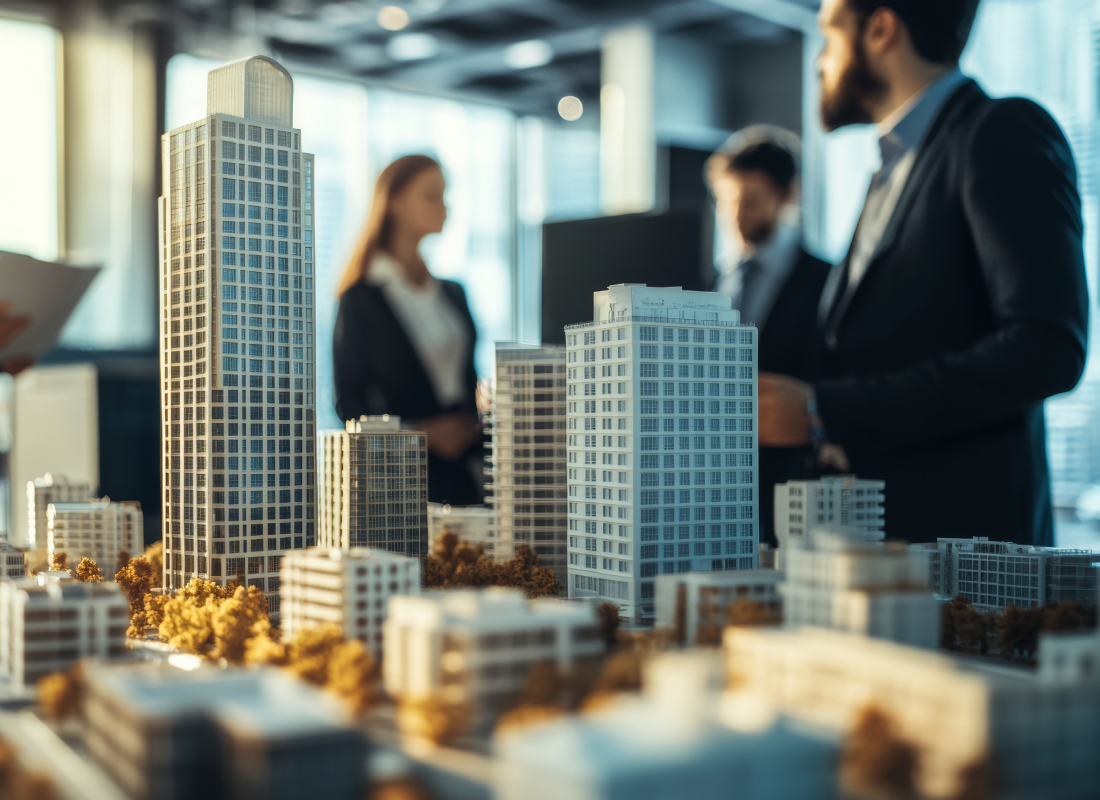7 Strategic Steps to Increase the Value of Your Real Estate Investments
Originally published on September 19, 2024
Updated on November 13th, 2024
As a real estate investor or fund manager, you’re continually seeking effective ways to enhance the value of your assets. Whether you’re preparing for a sale or aiming to boost your monthly cash flow, implementing targeted strategies can have a significant impact.
Here are seven proven approaches to increase the value of your real estate assets:
1. Maximize Net Operating Income (NOI)
Net operating income is one of the primary determinants of a property’s value when it’s time to sell. At a high level, boosting NOI comes down to two factors: increasing revenue and reducing expenses.
To increase rental income, conduct regular market analyses to ensure your rates align with current trends. Improve tenant quality through thorough screening processes to create more stable income streams and reduce turnover and vacancy costs.
Consider value-add strategies to justify higher rents. For instance, upgrading amenities or implementing smart home technology could allow for premium rates, attracting better tenants and increasing overall property appeal.
On the expense side, explore opportunities to lower operational costs:
- Challenge property tax assessments if you believe the value is overstated.
- Explore alternative insurance options or bundle policies to potentially lower premiums.
- Implement efficient repair and maintenance processes to address issues proactively.
2. Implement Strategic Value-Add Improvements
Value-add strategies can significantly enhance property appeal to tenants and buyers alike and, as a result, justify higher rents. When considering modifications, look closely at market demand, construction costs and potential return on investment before making your decision.
In today’s market, many investors are getting creative with value-add projects. For example, if you own a single-story apartment complex, adding a second floor could increase density and potentially create more in-demand units, boosting rental income per square foot. However, this would be a major construction project that incurs significant up-front costs and disrupts existing tenants. So you’d need to carefully consider the long-term benefits.
Other value-add strategies might include:
- Upgrading common areas or amenities
- Implementing energy-efficient systems to reduce operational costs
- Reconfiguring existing spaces to meet changing market demands
- Adding new spaces, such as storage spaces, that can be rented to tenants
Stay informed about local market conditions and tenant preferences to ensure your improvements yield the desired return on investment.
3. Optimize Tenant Mix and Lease Structures
The quality of your tenants and lease structures significantly affects property value. Focus on attracting reliable and financially stable tenants. If you own commercial real estate, you may want to focus on attracting government agencies or well-established corporations. For residential real estate, implement a thorough tenant screening process.
Commercial real estate operators, particularly those with retail or office space, should also consider the impact of anchor tenants. For example, securing a popular national coffee chain or fast food brand in a retail space could increase foot traffic and potentially justify higher rents for neighboring units.
For lease management, consider staggering expirations to maintain steady occupancy rates. Your leases shouldn’t expire all at once; ideally, lease expirations should happen evenly across the year to spread out the impact of turnover costs. For some asset classes, such as student housing, that might not be possible. But overall, this approach helps to maintain consistent cash flow and reduces the risk of multiple simultaneous vacancies.
4. Plan for Long-Term Maintenance
A proactive approach to maintenance preserves property value and prevents costly emergency repairs — supporting a healthy NOI and ensuring your property is attractive to potential buyers.
Develop a comprehensive maintenance schedule early on that identifies major components and their life cycles. Take environmental conditions into account for this. For coastal properties in Florida, for example, air conditioning systems might only last 5-7 years due to salt air exposure.
Create a sinking fund for future capital expenditures. If a roof replacement is anticipated in three years at $120,000, setting aside $40,000 annually ensures you have the necessary liquidity when the time comes. This approach helps avoid unexpected financial strain and demonstrates responsible property management.
Implement preventative maintenance practices, such as regular inspections and tune-ups, to extend the life of building systems. This approach balances short-term expenses with long-term savings and value preservation.
5. Make Strategic Renovation Decisions
Carefully assess the cost versus value of renovations to maximize returns. Sometimes a significant renovation can be more cost-effective than continual patching. Consider the impact on potential rent increases and overall property value when making these decisions.
When improving spaces, opt for quality materials offering longevity and ease of maintenance. In high-traffic areas of an office, for instance, consider using carpet tiles, which allow for easy replacement of damaged sections without replacing entire floors. This approach can save money long term and maintain a fresh appearance more easily.
Consider energy-efficient upgrades like LED lighting, improved insulation or solar panels, which can reduce operating costs and appeal to environmentally conscious tenants or buyers. These improvements may also qualify for tax incentives or rebates, further enhancing their value.
6. Enhance Curb Appeal
Aesthetic improvements can significantly impact buyer perception and property value in commercial real estate. Investing in landscaping, exterior painting and other visual enhancements can boost the property’s first impression, potentially attracting buyers or tenants and justifying higher rents.
Make sure aesthetic improvements align with the property’s style and target market expectations. A tech-focused office park might benefit more from a modern, minimalist approach compared to a traditional design typically seen in retail centers.
Consider these curb appeal enhancements:
- Professional landscaping and regular maintenance
- Updated signage and lighting
- Fresh exterior paint or facade improvements
- Well-maintained parking areas and walkways
7. Document All Improvements and Maintenance
Thorough documentation of property improvements and maintenance activities serves multiple purposes. Keep meticulous records of all repairs, replacements and upgrades, including dates, costs and specific details.
This documentation aids in accurate depreciation and tax reporting, facilitates future maintenance planning, supports partial asset disposition for tax purposes, and provides proof of property care for potential buyers — all of which potentially influence property valuation.
For multi-unit properties like apartment complexes, tracking individual unit improvements helps manage tangible tax reporting and depreciation schedules more effectively, especially in states with specific tangible tax laws. For a 100-unit complex, you’d need to account for 100 refrigerators, 100 microwaves and 100 stoves on your tangible return for the county.
Grow Your Real Estate Investments
Real estate investments are just that — an investment. With thoughtful maintenance and considered strategy, you can grow your investment so it not only remains profitable while you hold it, but also is primed to sell when the market is ready.
Managing your real estate portfolio is not always easy, especially on the financial side of things. A real estate professional from James Moore can help you build a more detailed financial roadmap, budget more accurately, assess the viability of new projects and more. To shore up your strategy and plan for the future, contact us today.
All content provided in this article is for informational purposes only. Matters discussed in this article are subject to change. For up-to-date information on this subject please contact a James Moore professional. James Moore will not be held responsible for any claim, loss, damage or inconvenience caused as a result of any information within these pages or any information accessed through this site.
Other Posts You Might Like

